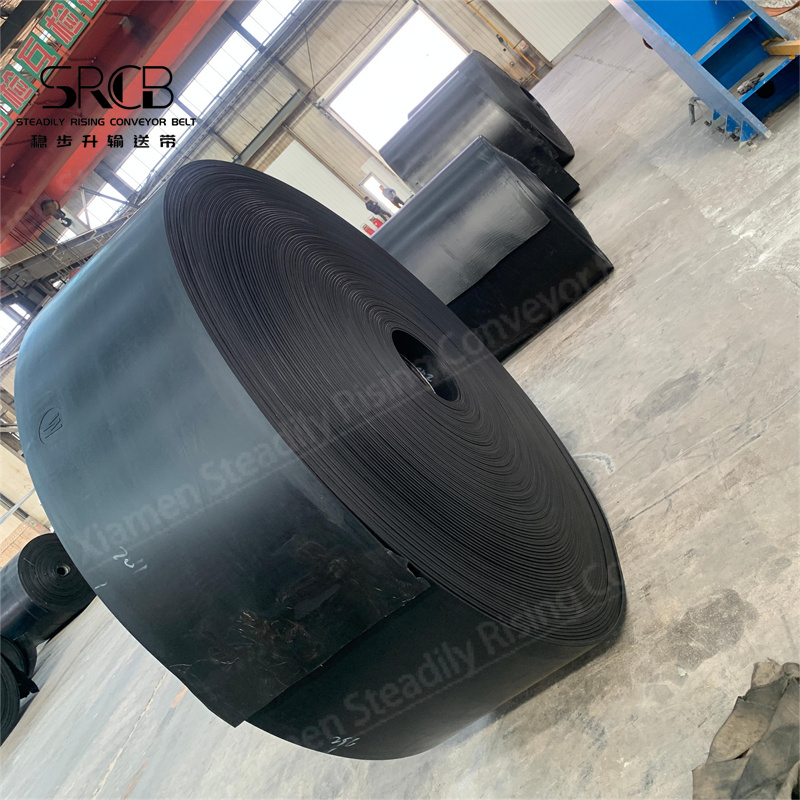
The analysis of physical property and chemical property of heat resistant conveyor belt
2024-04-07 00:22In November last year, our company shipped a 60-meter heat-resistant conveyor with a bandwidth of 1200mm to a cement clinker yard in Australia for the transmission and transportation of cement clinker.
The heat-resistant conveyor belt is made of multi-layer rubber cotton canvas (polyester cotton cloth) or polyester canvas covered with high temperature resistant or heat-resistant rubber, and is vulcanized and bonded together at high temperature.
It is suitable for conveying hot coke below 175℃. Cement, slag and hot castings, etc.
It is mainly used in metallurgy, construction and other industries to transport high-temperature materials such as sinter, coke, cement clinker, etc. The material temperature does not exceed 800°C and the belt surface temperature does not exceed 220°C.
Polypropylene heat resistant conveyor belt has good resistance, mechanical strength and chemical corrosive resistance and other advantages, thus is widely used in metallurgy industry, chemical industry, mining and electric power and other fields. The following will analysis the physical and chemical properties of the polypropylene heat resistant conveyor belt.
1. Physical property
The density of the polypropylene heat resistant conveyor belt is generally between 0.9 to 0.93 grams/cubic centimeter, which is light and good for reducing the weight of the conveyor belt to improve the conveyor effectively. The melting point is commonly between 160 and 170℃, the melting point is low, it is easy to be processed and shaped when melting. Due to the polypropylene molecules doesn’t have aromatic structures and are easily decomposed by heat so the polypropylene heat resistant conveyor belt has bad thermal stability, are prone to deterioration, deformation and other phenomena.
High anti tensile strength, it is usually between 20 and 30 MPA, therefore, it has good mechanical strength. The elastic modulus is small usually between 1.5 and 3 kg/cm2, so it could alleviate the impact forces during transportation to avoid vibration damage. The hardness of polypropylene heat resistant conveyor belt is low, generally between 70 and 100, so it is not easy to generate vibration voice and cause mechanical damage to the conveyed materials.
2. Chemical properties
Polypropylene heat-resistant conveyor belts have excellent chemical resistance which can resist most of corrosive substances such as organic acids, inorganic acids and general solvents, especially the stability will be best in the acid environment. It is highly hygroscopic and susceptible to moisture and water absorption, which in turn affects its physical properties and service life. Easily soluble in benzene, dichloromethane, chloroform and other organic solvents, but insoluble in water and most inorganic solvents. It is a flammable material and produced highly toxic smoke when burned. It is necessary to pay attention some relatively protective measures. It has poor light resistance, is affected by ultraviolet rays and oxidation and is prone to aging and deterioration, reducing its service life.
To sum up, polypropylene heat-resistant conveyor belts have a variety of physical and chemical properties, and their characteristics have their own advantages.

